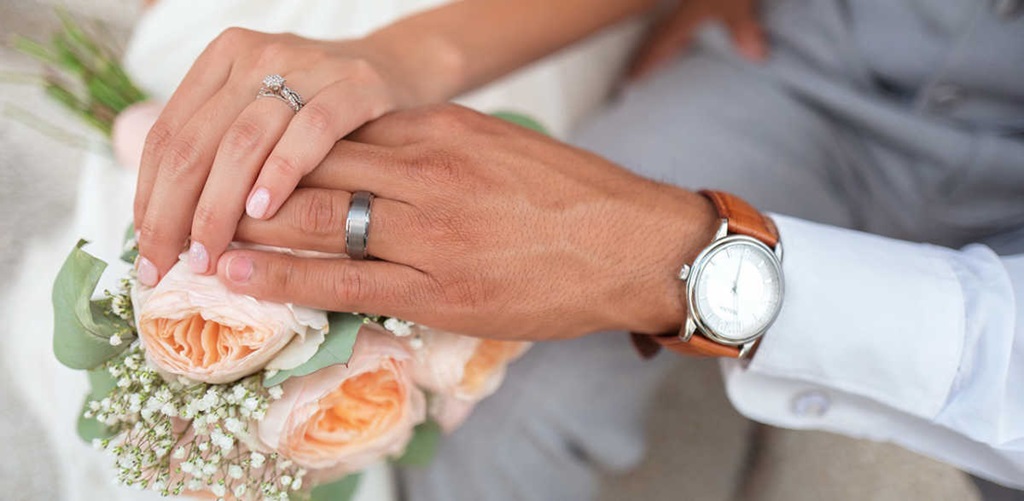Getting married is one of the most exciting times in a person's life. After the…
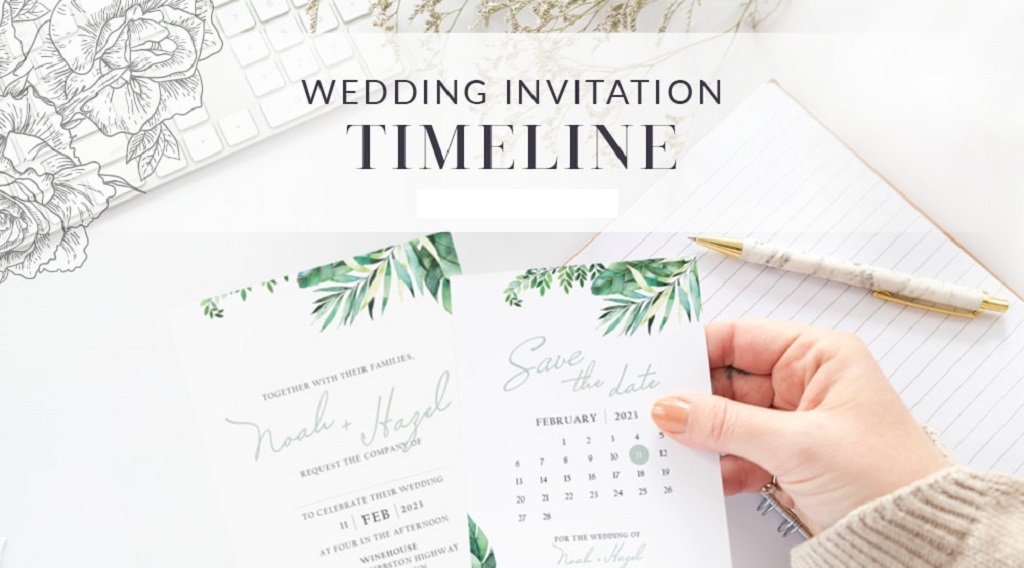
When Wedding Invitation Should Be Sent?
Planning a Wedding Invitation involves juggling many moving parts, from choosing a venue and caterer to selecting attire and entertainment. One of the critical logistical tasks is determining when to send out wedding invitations. With all you have going on, you want to issue your invites at the optimal time – not too early, but not too late.
When should wedding invitations be sent? It depends on several factors, including your wedding date, location, and style. Understanding wedding invitation etiquette and timelines lets you decide the best window for your guests.
How Early Should Wedding Invitations Be Sent?
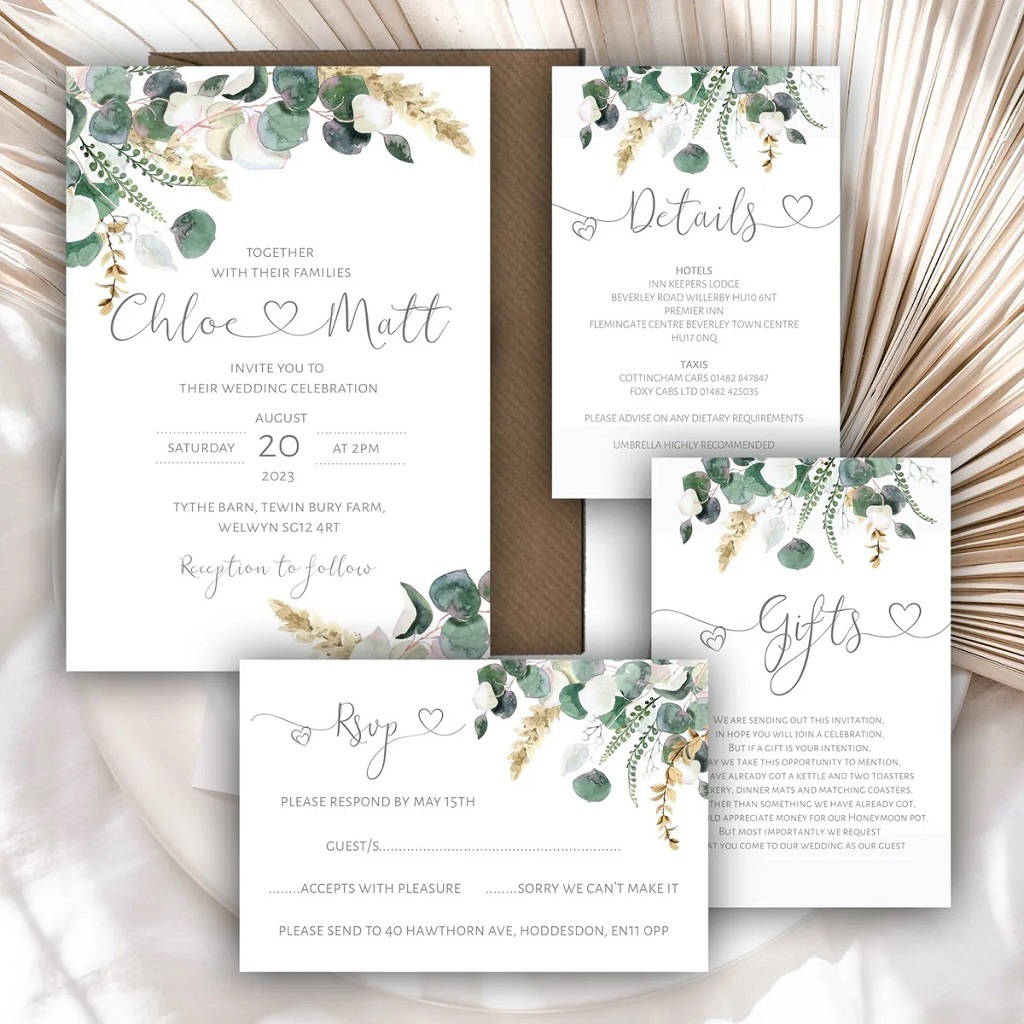
Traditional etiquette dictates sending wedding invites 6 to 8 weeks before your wedding date. This provides adequate notice for guests to make travel plans and request time off work while allowing you time to finalize details.
Here are some general guidelines on lead times for wedding invitations:
- Destination wedding: 6-8 months in advance
- Local wedding: 6-8 weeks in advance
- Courthouse wedding: 4 weeks in advance
- Second wedding: 6-8 weeks in advance
However, in today’s digital world, paper invites often go out later while save-the-dates provide an early heads up. If you plan to send save-the-dates, you can send your formal invitations 4 to 6 weeks out.
Ultimately, the right timing depends on your specific plans and guests—factor in details like travel and lodging to determine optimal notice.
Why You Should Send Invitations 6-8 Weeks Before
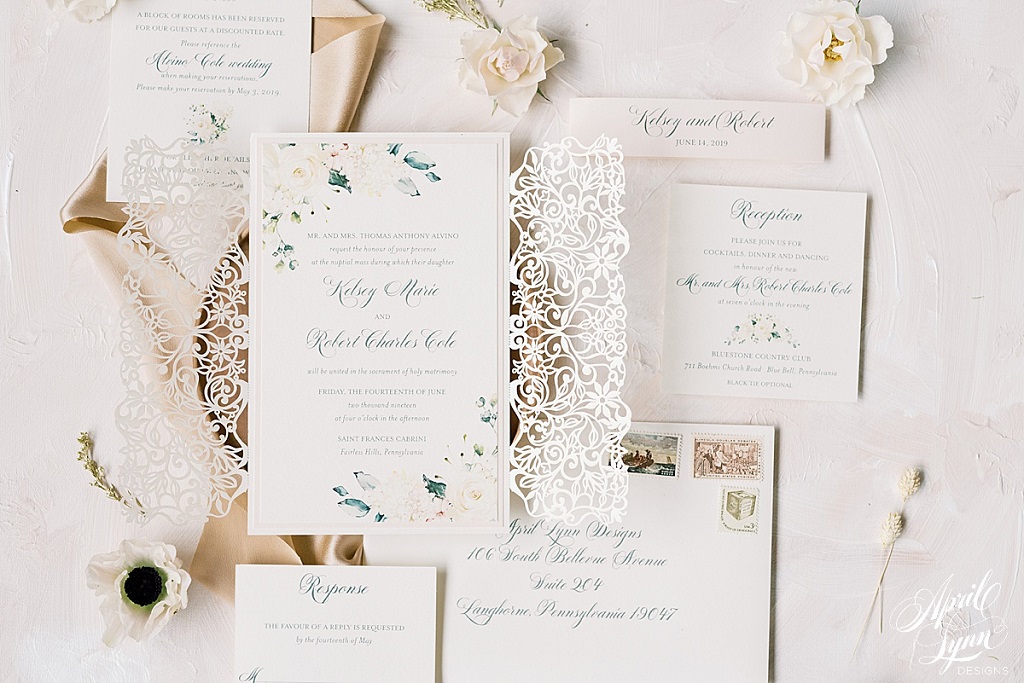
Sending wedding invitations 6 to 8 weeks out hits the sweet spot between too early and too late. Here are some key reasons this timeline works well:
Allows Enough Notice for Guests
Six to eight weeks provides sufficient notice for guests to clear their calendars and make necessary travel arrangements. It also gives them time to book affordable flights and hotels if needed. With less notice, your invitees may struggle to get time off work or make last-minute travel plans.
Allows Time for Responses
You’ll need to wait at least four weeks after sending invitations to follow up with guests who haven’t RSVP’d. Eight weeks total allows ample time for responses so you can finalize catering and seating charts. With less time, you may be stressed chasing down responses.
Conforms to Etiquette Standards
Sticking to the 6 to 8-week rule aligns with longstanding etiquette. Your guests will find it appropriate and not too pushy. Leaving less time between the invite and the event may seem rude or gift-grabby.
Avoid Details Changing
Six weeks out, your wedding plans should be pretty locked in. You’ll have confirmed vendors, so details like time and location on the invite will be accurate. With more lag time, the specifics may change, requiring update cards.
Captures Excitement
A month to two months out hits the excitement sweet spot. After eight weeks of anticipation, guests will be thrilled when invites finally land. Too far out dulls momentum, but a tight window amps up enthusiasm.
Allows Time for Bachelorette Party
Having your bachelorette party one to two months before the big day is customary. Eight weeks for invitations allows time for pre-wedding partying with your girls. Leaving less time may require scheduling your bachelorette earlier.
So, in most cases, aim to send your wedding invitations 6 to 8 weeks in advance. This gives your guests sufficient notice without dragging out the timeline. Now, let’s look at some exceptions to this rule.
When to Send Wedding Invitations Earlier
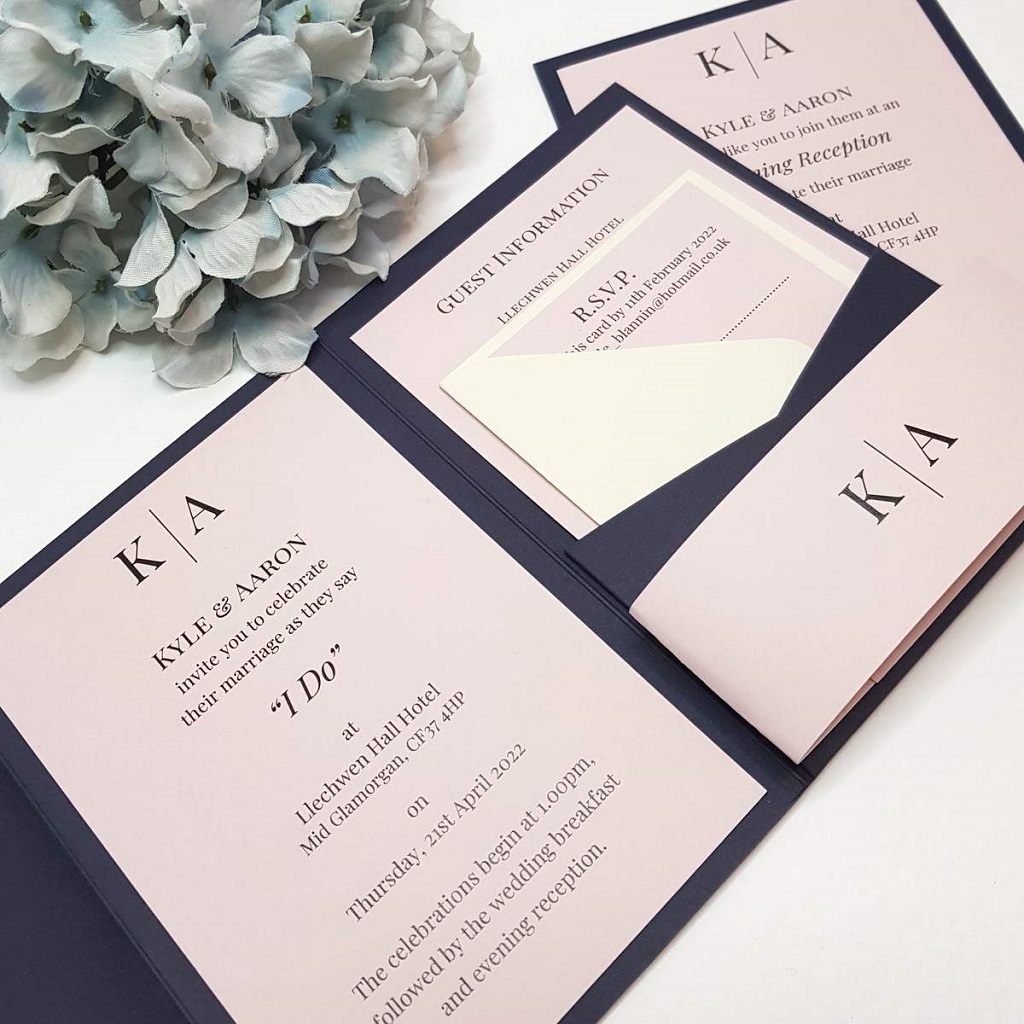
While 6 to 8 weeks is the standard timeline, you may need to send invitations earlier in certain situations. Here are some cases where it makes sense to send invites further in advance:
Destination Wedding
For a destination wedding, especially overseas, send save-the-dates up to a year out and formal invites 6 to 8 months in advance. This allows your guests time to request passports and make international travel plans.
Major Holiday Weekend
If your wedding falls on or near a major holiday like July 4th or Memorial Day, guests must make plans further in advance. Send your invitations at least 3 months out.
Guests Traveling Long Distance
Add extra lead time for invitees traveling across the country or from abroad. Consider sending invites 3 months before the big day so they can book flights and hotels.
Popular Wedding Season
Venues and vendors book up early during peak seasons like June or September. To give guests the best chance of clearing schedules and making arrangements, send invitations 4 months before the date.
Large Guest List
The more guests you invite, the earlier you should send invitations. Large guest lists mean more schedules to coordinate and travel to book. Eight weeks may not suffice for 200+ person weddings.
Budget Conscious Guests
If you know many guests will be budget-conscious about travel costs, give them ample planning time with 4 to 5 months’ notice. This allows for the booking of affordable flights and hotels.
The standard timeline doesn’t always apply. Adjust when you send out Wedding Invitation invites based on factors like destination, season, and guest list size to ensure sufficient notice.
When You Can Send Wedding Invitations Later
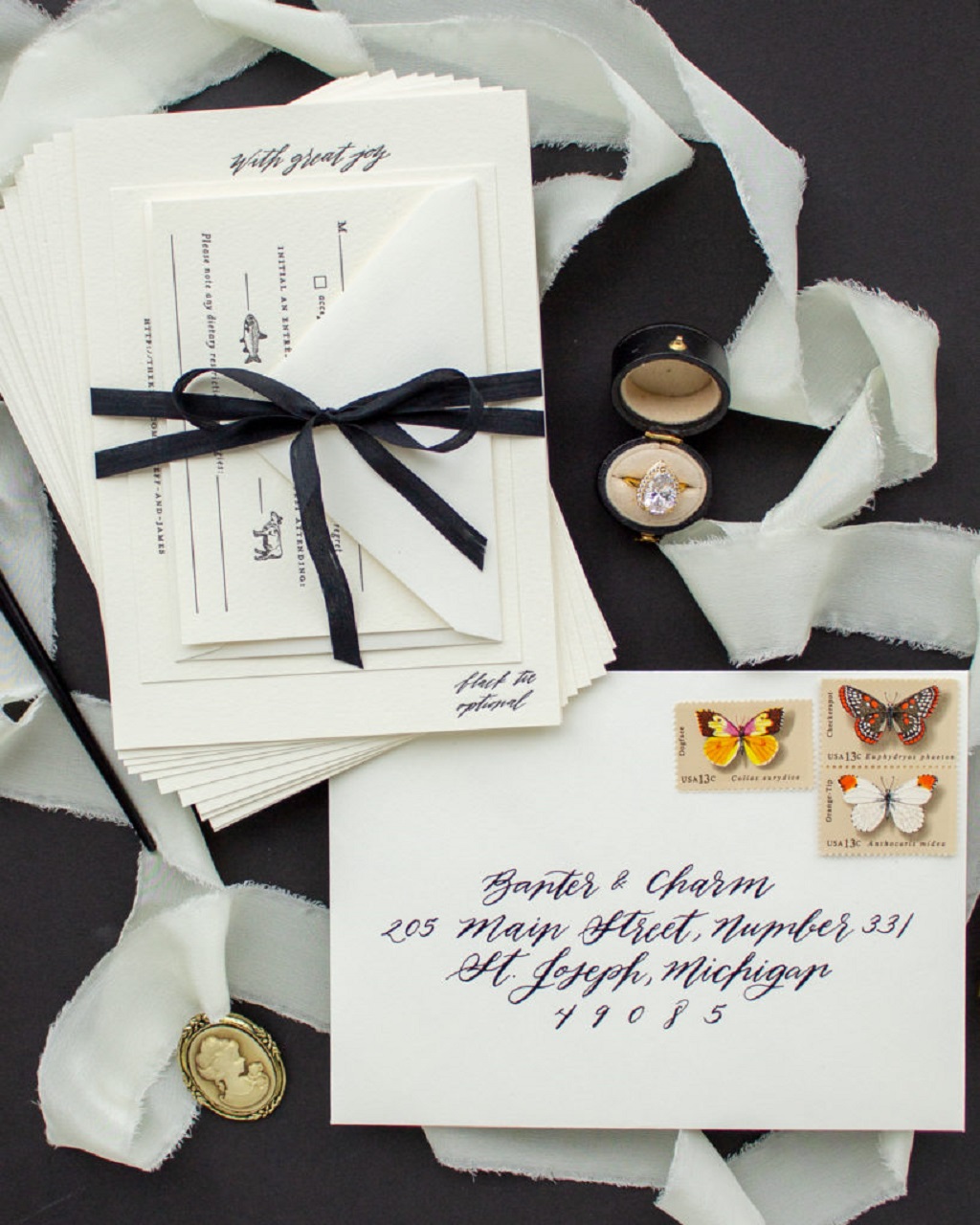
While most weddings require 6 to 8 weeks advance notice, you can send invitations later in some cases:
Small Guest List
If you only invite immediate family and close friends, you may be OK with 4 to 6 weeks’ notice. Fewer guests make coordinating simpler.
Local Wedding
Similarly, if most guests are local and do not require extensive travel, you can wait until 6 weeks before the big day to send invites.
Weekday Wedding
Weeknight or Friday weddings require less planning than Saturday events, so 4 to 6 weeks is often sufficient notice.
Minimal Details
If your wedding is more casual, with fewer details to finalize on attire, lodging, and activities, you can allow less lead time on invites.
Courthouse Wedding
For a courthouse or city hall wedding, you only need to give invitees about 4 weeks’ notice to take off work and make simple plans.
Second Wedding
Remarriage Wedding Invitation are usually on a smaller scale so that you can send invites 4 to 6 weeks in advance rather than 6 to 8.
While you should stick to tradition when possible, opt for shorter notice when guests don’t need extensive planning time. Just be conscious of inconveniencing VIPs with late invites.
Save-the-Date Strategy
Save-the-date cards have become a popular way to provide an early preview of your wedding date before sending formal invitations. Here are some save-the-date strategies:
Send 6-12 Months Before Wedding
Most couples send save-the-dates 6 to 12 months before the Wedding Invitation date. This early heads-up allows guests to pencil in the date.
Follow with Invites 8 Weeks Later
Then, follow up with the official invitations 6 to 8 weeks before the wedding as usual. The early save-the-dates buy you leeway with the formal invites.
For Long Distance Guests
Consider save-the-dates just for wedding party members and long-distance travelers. They must need a warning to make arrangements.
For Popular Dates
Are you having your wedding on a holiday or during peak season? Ensure guests can plan with save-the-dates.
Online Only
You can send online save-the-dates through your wedding website or email to save money. Then mail printed invites.
Save-the-dates alert your VIPs to lock in the date before sending invites. This transitions guests smoothly from preliminary plans to concrete commitments.
Now that you know when to optimally send out your Wedding Invitation , let’s discuss how to assemble them.
How to Assemble Wedding Invitations

Once you decide on your guest list and date, it’s time to assemble your wedding invitations. Here’s an overview of assembling wedding invitation suites:
Select Design Elements
First, choose your invite colors, paper, fonts, motifs, and embellishments to reflect your wedding style. Many printers offer suite packages and custom creation options.
Order Print Components
Typical wedding invitation suites include invites, response cards, accommodation cards, and reception cards. Order all printed pieces from your stationer.
Determine Wording
Draft all wording for invitations following proper etiquette. Be sure to include who is hosting, the couple’s names, date, time, and location.
Stuff Envelopes
Stuff each invitation suit into an envelope. Make sure the address text is clear, and the envelopes are uniform. Use inner envelopes for formal invites.
Address Outer Envelopes
Carefully address outer envelopes by hand in calligraphy or high-quality print. Make sure names and titles are correct.
Affix Postage
Add stamps, wedding motif stickers, or custom postage to the assembled envelopes. Weigh them to ensure proper postage.
Include Response Cards
Insert response cards and pre-addressed stamped envelopes so guests can quickly RSVP.
Order Extras
Order ~10% more invitations than your guest count to allow for errors, writing mistakes, etc. You can always reuse extras.
Do a Trial Run
Practice assembling a sample invite suite to complete the process and check envelope sizes before stuffing all invites.
Use a Return Address Stamp
Invest in a custom return address stamp with your new marital name and wedding location to quickly stamp envelopes.
Skip Inside Envelopes for Informal Weddings
You can skip the inner envelope for less formal weddings and use one mailing envelope.
Use Calligrapher for Addressing
Hire a calligrapher to hand address envelopes if you want top-level formality. Or use calligraphy printable addresses.
Include Other Inserts
Consider adding wedding weekend event cards, maps, travel information, registry details, and invites.
Seal with Wax
Seal inner flaps with wax and a custom monogram stamp for ultra-formal invitations.
Send in Waves
Assemble invites in batches, starting with out-of-town guests first. Address and send locally closer to the date.
With attention to detail, you can assemble elegant wedding invitations to set the stage for your nuptials. Now, let’s go over timeline reminders.
Wedding Invitation Timelines
Here are some quick tips on ideal timeframes for critical invitation task:
- Order/print invitations 10-12 weeks before the wedding
- Draft invitation wording 6-8 weeks before
- Mail invitations 6-8 weeks before
- Send save the dates 6-12 months before
- Deadline for responses two weeks before
- Follow up with late responders three weeks before
Build your wedding planning timeline around these invitation milestones. Having a system ensures your guests get sufficient notice to celebrate with you.
It would be best if you now had a firm grasp on when and how to coordinate wedding invitations. Next, let’s go over some frequently asked questions.
FAQ
What should I include with my wedding invitations?
Include response cards, directions, accommodation info, and inserts about wedding events with your invitations. Provide all logistics guests need to attend.
How early should I send destination wedding invitations?
For domestic destinations, send invites 6-8 months out. For overseas weddings, send save the dates up to a year off and invites 8-10 months in advance.
What size envelope do I need for wedding invitations?
Regular invitation suites fit in A7 (5 3/8 x 7 1/2 inches) envelopes. Oversized invites may require A6. Consult your stationer.
How many envelopes do formal wedding invitations use?
Traditional formal wedding invites have an outer and inner envelope. Very casual invites may only use one envelope.
Can I send online-only wedding invitations?
Yes, digital invitations through your wedding website, email, or texts are now acceptable for less formal weddings.
When should I send out wedding thank you notes?
Send thank you note to guests within 2-3 months after the wedding. Handwritten is best, but email is acceptable for quick thanks.
Conclusion
Coordinating wedding invitations involves many moving pieces. Give your guests sufficient notice to attend while allowing time to finalize plans and follow etiquette. Planning a ‘Party Like Newlyweds’ celebration? Remember, while typical timelines suggest sending invites 6-8 weeks before the wedding, it’s crucial to adjust accordingly for a destination or holiday wedding, where guests may need more advance notice to join in the festivities. Save-the-date cards provide an early preview so you can send formal invitations later. Use the 6-8-week guideline as you build your wedding planning timeline and tasks. With proper coordination, your invitations will set the stage for a fantastic event shared with everyone you love.


